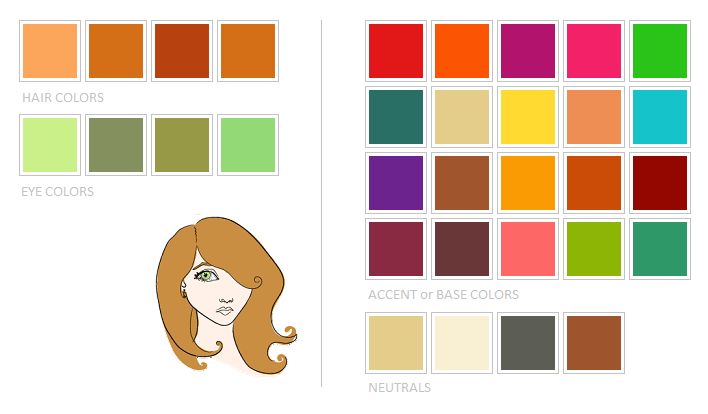

The best way to talk about these factors is in terms of what colors look harmonious on each individual. Every color season has a wide variety of natural hair colors, eye colors and ethnicities.
#TRUE AUTUMN VS DARK AUTUMN ORANGE SKIN#
A customer with Tyra Banks' mix of warm skin tone with cool and bright eye color takes a little more time to dial in. Do keep in mind that this system was developed for and by northern Europeans, so there are additional factors to consider when assisting customers of non-European origin, or who have mixed heritages. Well, that depends on you and what you consider minimalism! If you like a lot of variety, then go for it! However, when building a small capsule, you’ll find that limiting your color options is the best idea.There are multiple elements to consider when doing a quick analysis of a customer's coloring. If the answer is no, and you still feel this is completely wrong, let me know! I can help! I dare you to look at your closet and see if you naturally gravitate to any of these colors. Is it one of the color families, yellow or orange perhaps? Don’t wear them! Just because a palette includes all these colors doesn’t mean you should wear them all. But I want to challenge you, what is it that you hate? Is it the neutrals that you don’t like? Perhaps you don’t like brown? Refer back to my statements above about wearing black. I hate these colors, could my season be wrong? However, if you are building a capsule wardrobe around dresses, I highly recommend using black as a base simply because you’ll be able to find items easier. Black isn’t your BEST color, however, as you’ll find mocha, cognac and olive are more flattering. As a warm autumn black is best kept to pieces worn on the lower half of the body. Any season can wear black, but some may find it is overwhelming. I personally believe that black is a staple in any wardrobe. Colors should be neither overly saturated or muted with gray to match the neutrality of warm autumn’s chroma. Pastels should always be avoided as they lack the shaded aspect of warm autumn’s features. Black and white have been mentioned as they are too stark and high contrast for warm autumn. There are some colors that warm autumn should always avoid. Purples are best that lean towards red instead of blue. Warm pinks often become deep coral, some reds may be too cool, any blue without green is also too cool.

There is usually a version of every color that can be worn by any season, but some may be more difficult to match and find. Warm blues and purples accentuate the bolder colors as well. Yellows and greens are also prominent in the warm autumn palette, ranging from mustard through sunshine, warm army and deep juniper. In the pink family, coral will work, as will garnet. Warm autumn can wear the most brilliant and rich shades of red and orange. Midnight navy and dark olive work well as neutrals, as do medium tans. In creating a palette for warm autumn we start with neutrals, and work through the major color families.īlack and white are out for autumn with pecan and ivory taking their place.


 0 kommentar(er)
0 kommentar(er)
